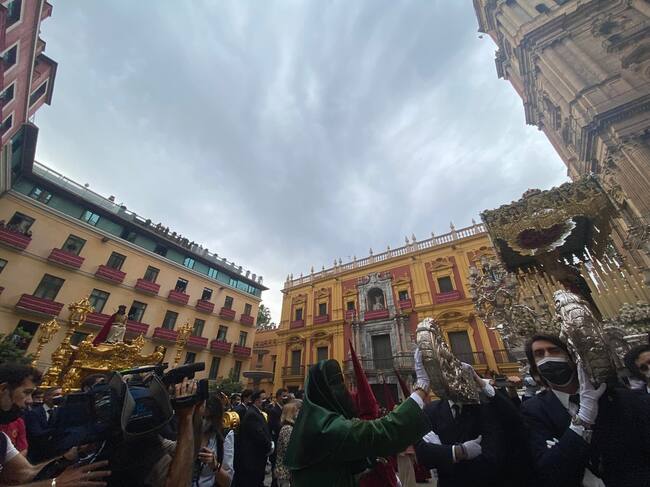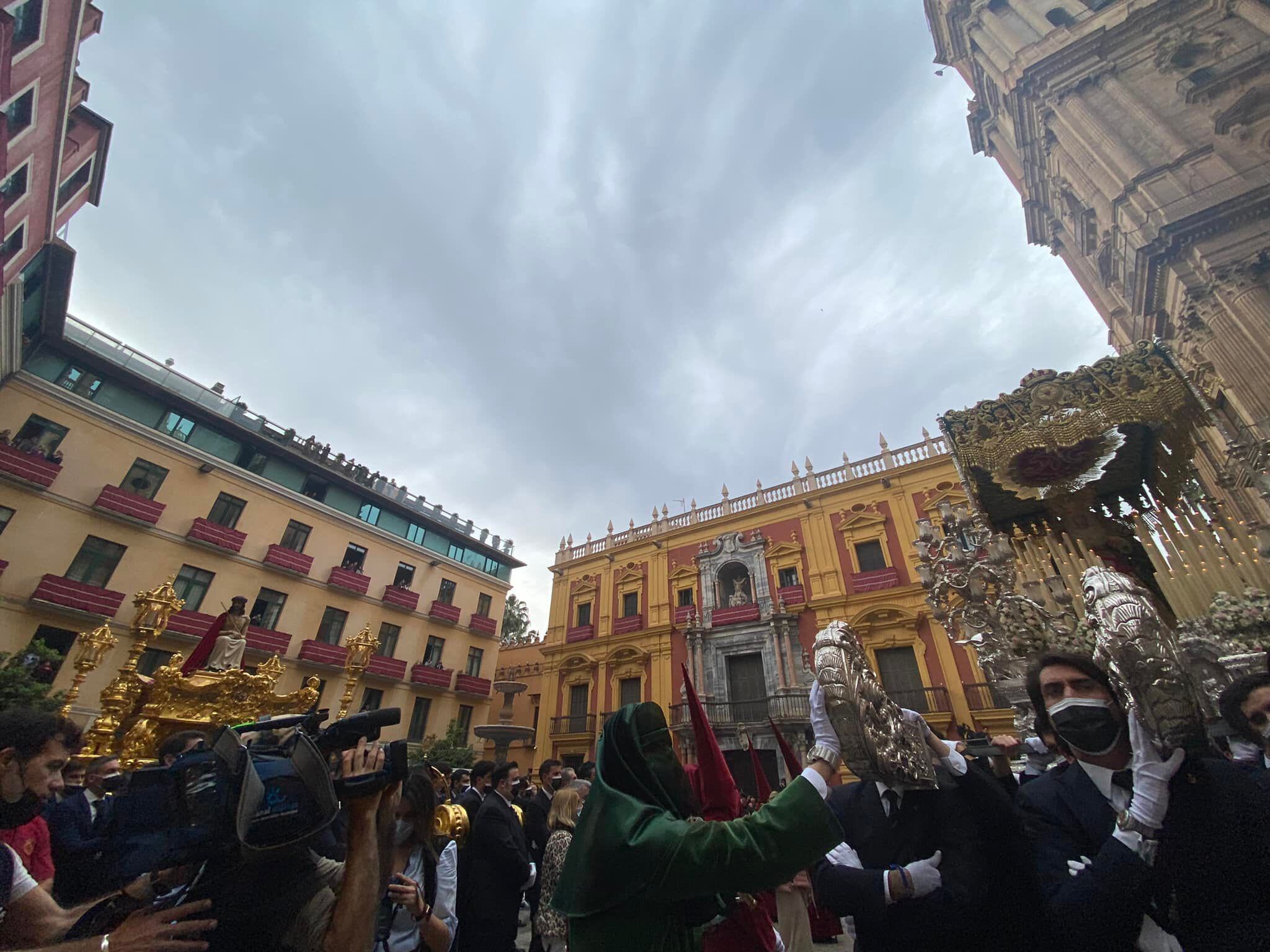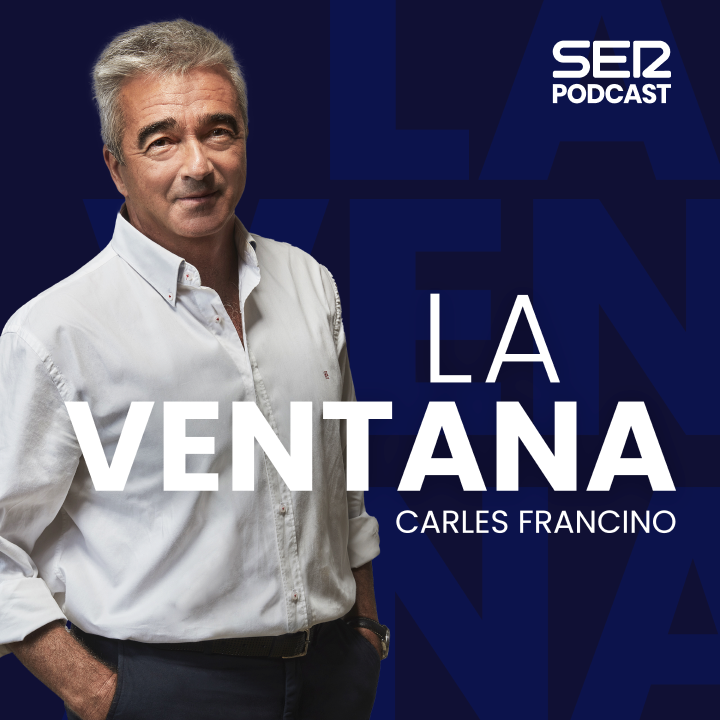Monday, Malaga Holy Week. Lunes Santo en inglés
Monday has six images in Málaga.


Málaga
The holy week is one of the most important events in Spain. Tradition, faith and passion move millions of people from different places around the world. Last year, Malaga welcomed more than 6 millions of visitors because of this celebration.
Malaga city has more than 42 brotherhoods and more than 100 holy images.
OUR STAFF
Since the origin of our radio station, SER Malaga funded a professional staff to cover all of the events during this memorable week. Our media is known around Spain working in Malaga for more than 30 years and more than 10000 listeners. He also goes out to the streets to experience the great moments of Lent and, of course, throughout Holy Week.
CRUCIFIXIÓN
Description
This crucified sculpture is the largest of the entire Holy Week of Málaga, reaching 198 centimetres from his head to his feet. According to the sculptor, Jesus tilts his head to the right in a dialoguing attitude. The inspiration comes from the conversation Jesus had with Dimas, the good thief, when he redeems him, as a symbol of forgiveness in the world. In this case, we observe that Jesus has been nailed to the cross by the wrists and not by the hands, as is usually represented in most of the statues. This way, the hands are free, thereby expressing more with them.
The Santísimo Cristo de la Crucifixión is carried in an austere float, made in wood and embellished with silver.
Additionally, the Virgin, Nuestra Señora del Mayor Dolor en su Soledad, shows a contained anguish.
How are they dressed?
In the section of Christ: purple tunic, with black capirote and embroidered shield on the chest.
In the section of the Virgin: black tunic, with purple capirote and embroidered shield on the chest.
GITANOS
Description
The float of Jesus, Nuestro Padre Jesús de la Columna stages the biblical passage in which he is tied to a column waiting to be whipped. After him, we can see the float of María Santísima de la O, a sweet-faced Virgin who mourns the martyrdom of her son and who is embellished with coral jewels, very popular amongst Gypsies.
However, the most unique characteristic of this brotherhood is not found in its patrimony, but rather in the believers who follow both floats. Most the people who walk behind these floats in fulfilment of a vow, belong to the gypsy ethnicity, hence why the brotherhood is known as “Gitanos” (gypsies). If anyone is asked about this procession this is the name that should be used so that is clear which one we are referring to. Also, the penitents do not pray when following the floats, but they sing and dance flamenco. After the procession, it is normal to hear the rejoicing of the penitents. When the procession goes back to their brotherhood house, lots of flamenco songs can be heard.
Additionally, the penitents wear different attire than most of brotherhoods, they are not wearing capirotes, but a silver-plated crown (with the same shape as the crown of thorns of Jesus) that holds the head piece.
How are they dressed?
In the section of Christ: purple tunic and head piece.
In the section of the Virgin: burgundy tunic and white head piece.
None of them wear a capirote, but a silver-plated crown of thorns.
DOLORES DEL PUENTE
Description
On this float, we see three crosses. In the centre, Christ, Santísimo Cristo del Perdón, is looking to his right where the good thief Dimas is crucified. To his left is the second thief who was crucified with Jesus, Gestas. It is the only sculptural group in Málaga carrying the figures of the thieves accompanying Christ in his death. In addition, at the feet of the three men we can find Saint John the Evangelist and the Virgin, Virgen de la Encarnación, the latter being an anonymous piece from the 17th century.
In this procession, we find two statues of the Virgin, the one at the feet of the crucified Jesus and the one carried on the second float, Nuestra Señora de los Dolores. This piece is a work from the 18th century, attributed to Pedro Asensio de la Cerda. It is a moving expression of pain that is reflected on her pale face.
What stands out is the shape of the Virgin’s float. It shows a clear inspiration of Antequera style, its main feature is the high pedestal where the images stand. We should also emphasize the canopy, with its rectangular shape and no embroideries.
How are they dressed?
In both sections the penitents wear black tunics and capirotes with the embroidered shield and white cíngulo.
PASIÓN
Description
The journey of Jesus towards Golgotha is full of secondary characters that gain a great relevance in the last hours of Christ's life. Simon, the Cyrene, is one of them. On this float is the moment when Simon helped Jesus with carrying his cross to the top of Golgotha, where he was crucified.
The two images are carried on a silversmith float typical in the Holy Week of Málaga, created by the artist Seco Velasco in 1946.
On the other float, María Santísima del Amor Doloroso, is a piece created by the sculptor Antonio Asensio Cerda in 1771.
The tunics of the penitents have a small tail symbolising the dragging of our sins and it also becomes a sign of mourning for the passion and death of Jesus.
How are they dressed?
In both sections: purple tunic with tail with a belt made of straw and embroidered shield
ESTUDIANTES
Description
The brotherhood of Estudiantes puts a note of colour and music to the Holy Monday of Málaga. Over one thousand nazarenos (it is the brotherhood with most penitents) distributed across both sections colour the streets in red and green. Meanwhile, the float’s carriers, under the poles, swing the Santo Cristo Coronado de Espinas with the rhythm of the university hymn Gaudemus Igitur, which they sing throughout the tour. This is a song known by the entire population of Málaga, who does not hesitate to sing along the procession.
There is a link between education and this brotherhood, and this link is not only based on the hymn and the large number of people who walk behind these floats in fulfilment of vows related to exams, but the University of Málaga is an honorary member of the brotherhood. Therefore, in the procession we can find a representation of the Government Team from this academic institution, including the Dean, as well as representatives of each College and Faculty of the University. Each director and the Dean wear a band with the corresponding color of their studies offering a colourful picture of the procession.
We should also highlight the youth of many of the float’s carriers, due to the fact that many malagueños choose this brotherhood as a first experience carrying a float. The carriers must wear a dark blue suit and tie, a very popular attire in past decades that has been decreasing in favour of each brotherhood’s specific tunics, which is more commonly used today.
The float of Santo Cristo Coronado de Espinas sits on the shoulders of many university students. Jesus is sitting alone, with a purple mantle, a cane in his hands and a crown of thorns on this head. It represents the moment when the Roman guards make fun of him by calling him "King of the Jews." The statue is raised on a special structure, a version of the so-called “trono de carrete” created by Cristóbal Velasco Cobos, where the image is on a stand. Its total weight is 2,500 kilograms to which we must add the 100 kilograms of the statue of Jesus. Its dimensions are 4.09 x 3.25 x 2.49 meters.
One of the most important moments in the procession of this brotherhood is the ceremony that takes place in the Plaza del Obispo, where thousands of people gather. In this space, both floats meet and the Bishop of Málaga conducts a small ceremony. After that, the floats continue with their route. On many occasions the carriers stretch their arms up, raising the floats “a pulso” and perform different step combinations, so it would appear that the floats are dancing.
The procession is closed by Nuestra Señora de Gracia y Esperanza, dressed with a green velvet cape, the same colour as in the canopy, which carries some hanging ornaments (morilleras) this creates a special sound when they touch the bars of the canopy, a sound similar to bells, characteristic of this brotherhood.
How are they dressed?
In the section of Christ: red tunic and capirote with golden cíngulo and a shield embroidered on the chest.
In the section of the Virgin: green tunic and capirote with golden cíngulo and a shield embroidered on the chest.
CAUTIVO
Description
If you walk by the Trinidad neighbourhood at any time on Holy Monday, you will see that it is full of life, that this is the day when the real heart of the neighbourhood will be on the streets, Jesus Cautivo and his mother, Maria Santísima de la Trinidad. This brotherhood moves the devotion of thousands of people, arriving from the most distant places of Andalusia, some of them asking for miracles, some of them fulfilling vows because of already granted favours. Therefore, if you want to see the start of the procession, you should be there a few hours beforehand, so you find a place in the Plaza de San Pablo, where the brotherhood house is located. It will be worth it, since it is a real spectacle of the Holy Week of Málaga.
At the beginning, each year a renowned person is in charge of making the bell sound with the corresponding instructions to raise for the first time the float of the “Lord of Málaga”, as he is known. Once the float is raised, saetas are sung one after another on the first steps of Jesús Cautivo, something that will be repeated throughout the entire route, especially when entering in the brotherhood house at the end of the procession.
The Lord of Málaga stands impressively in the centre of a mount of red carnations, with his white tunic flying in the Málaga breeze, as if it was the water of the Mediterranean Sea. The lightness of the angel skin fabric (the fabric the tunic is made of) makes it move in a unique way to the rhythm of the movement of the men carrying the float from the Trinidad neighbourhood. Jesus’ hands are tied in front of his body by a golden cord, as a sign of his convict status. From a distance, it gives the impression that Jesús Cautivo "walks" through the streets of Málaga.
The great devotion that this Christ envokes can be verified behind the float, the designated space for the people walking to fulfil their vows. Thousands of people (30,000 have been counted) gather in the rows of penitents. Many of these penitents are blindfolded, others walk barefoot, ending the route with wounds on their feet, we can also see people carrying crosses or walking with chains around their ankles and some even do part of the route on their knees. All this, as proof of their fervour to this statue of Jesus.
Closing the procession, we can see Jesus’ mother, called affectionately by many people as "la Trini". The Virgin also receives great devotion, demonstrated, in addition to the night of Holy Monday, on the day the statues are transferred to their main floats. That day, mother and son share the same float (a smaller one) and walk the streets of the Trinidad neighbourhood until they reach the Civil Hospital, where they visit the patients who cannot attend the processions on the streets.
How are they dressed?
In the section of Christ: white tunic and capirote, with golden cíngulo and scapular.
In the section of the Virgin: mauve tunic and capirote, with golden cíngulo and scapular.






